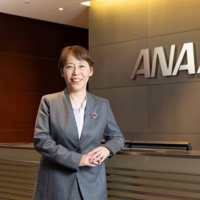The Cabinet Office said in its monthly economic report for October that the current economic expansion, now in its 57th month, has tied Japan's longest "boom" of the postwar period, which occurred during the second half of the 1960s. With the current economic recovery expected to continue, it is certain that Japan will post its longest postwar boom in November. But this expansion is of an unfamiliar type, as people barely feel any of its benefits.
This is because the long period of deflation still casts a shadow over economic activities, and the economy's growth rate is very low. Typically, the report avoided declaring that the economy has exited the long tunnel of deflation. An explanation by a Cabinet Office official aptly sums up the current conditions: The economy is not in a state of deflation but has yet to reach the stage where the government can announce a full departure from it.
During the Izanagi boom, which lasted from November 1965 to July 1970, the economy achieved a double-digit annual growth. By contrast, the annual average growth rate of the current boom, which started in February 2002, is 2.4 percent, about one-fifth the growth rate accomplished during the Izanagi boom. Prices rose by about 5 percent annually during the Izanagi boom, but workers' wages nearly doubled over the period, contributing to increased sales of the "3C's" -- cars, coolers (air conditioners) and color TV sets.

















With your current subscription plan you can comment on stories. However, before writing your first comment, please create a display name in the Profile section of your subscriber account page.